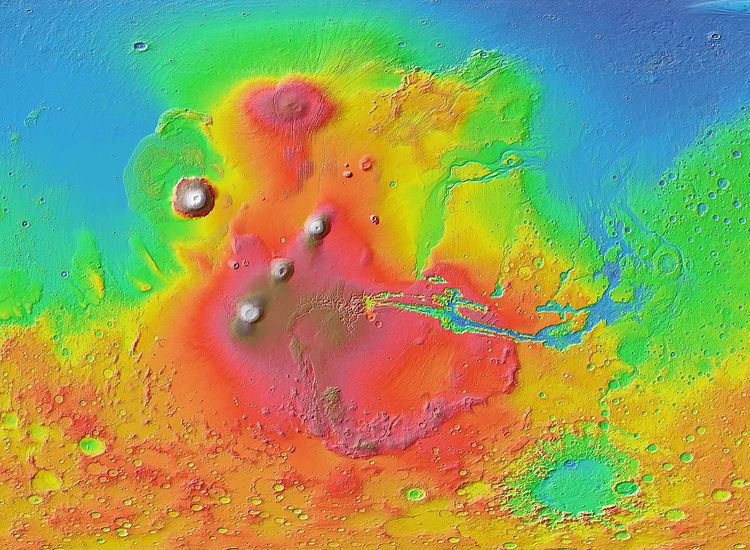 | ||
For some time, scientists have thought that the location of the poles of Mars have shifted due to the great mass of volcanic material in the Tharsis dome which includes Olympus Mons, the highest volcano in the solar system. A study published in Nature supports this idea. For a period early in the history of Mars, the poles were about 20 degrees away from their present positions. At that time ice was deposited in a region called Dorsa Argentea Formation. Also, the Martian dichotomy was aligned along the equator. A band of rivers formed at around 25 degrees south carried water from the southern highlands to the northern lowlands. After the polar shift, the location of the dichotomy boundary and the band of river valleys shifted. Dorsa Argentea was no longer at the pole. To produce the change in the pole location, the tilt of the planet remained unchanged, rather the crust and mantle moved. They rotated around the core. This new study suggests that the volcanoes and the movement of the poles occurred at about the same time. Volcanoes were erupting when the rivers were flowing with water. Perhaps the volcanoes supplied much water to the atmosphere, as well as carbon dioxide to warm the atmosphere; these effects would provide water for the rivers.
Tharsis is found in the Amazonis quadrangle and the Tharsis quadrangle.
